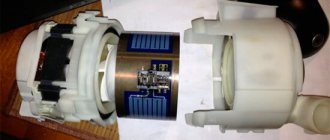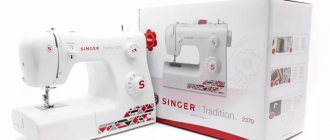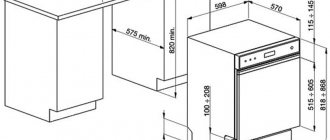The household appliances market is actively replenished with appliances for home and everyday life. We are used to a kettle, a vacuum cleaner or a washing machine, but we are looking closely at some new technical innovations. The kitchen is being “attacked” by microwaves, multicookers, pressure cookers, blenders, yogurt makers and other appliances. Their abundance and variety of utensils used require care. A logical question arises: is a dishwasher necessary?
We suggest considering the pros and cons of dishwashers in order to make a decision: is it worth buying a PMM or not.
Why do you need a dishwasher?
Important! According to statistics, PMMs are increasingly entering the home to simplify housekeeping and optimize everyday life. But millions of families still manage without it. Why are dishwashers not common? Probably, the Russian consumer associates automatic dishwashing with huge volumes of dishes, typical of restaurants, hotels, catering, etc.
Is a dishwasher profitable? It significantly saves time, effort and resources, but we do not insist on immediate purchase. You need to weigh the pros and cons to make a decision.
Do you think that for a family of 2 people there is no need to purchase a dishwasher?
Let's simulate the situation: dinner for 2 people, the plates contain the usual food - mashed potatoes, a cutlet, a salad of fresh vegetables, a cup of strong tea. It would seem that there are not many dishes, and you can spend 15 minutes washing them. Why then do you need a PMM if you have to wait several hours for the plates to shine again? Let's make some adjustments: all of the food mentioned was cooked in some way - in a saucepan and in a frying pan. Add them. And it's just dinner for two. What to do when guests show up?
Fact! A dishwasher is not necessary for those who really enjoy washing dishes with their own hands. Hand on heart, can you admit this to yourself?
But not every dishwasher can accommodate large dishes: a pot or a frying pan. Some of the used utensils will have to be washed with your own hands. This is not a matter of technique at all, but of a wrong choice. Let's look at what to look for when purchasing.
Advantages and disadvantages
Like any other household appliance, a dishwasher has its advantages and disadvantages. The device offers more pros than cons, but for some the disadvantages will be significant.
Among the advantages are the following things:
- ideal cleaning of dishes from any dirt;
- saving water;
- saving time;
- the ability to disinfect cutlery (washing is carried out with water at a temperature of 90-99 degrees);
- gentle cleaning.
There are other advantages too. For some people, a dishwasher is a real way out and a solution to the problem of constantly washing dishes. This device will be appreciated by a large family. Among the disadvantages are:
- electricity consumption;
- the need to use the useful space of the forge for installation;
- spending money on purchasing the dishwasher itself;
- expenses for specialized detergents;
- waiting for the moment until a sufficient number of dishes have accumulated in order to wash them (it is irrational to wash plates separately).
For some people, these disadvantages will be significant. It is not always possible to place a large dishwasher in the kitchen. Also, if a person lives alone, he will accumulate the required amount of dishes for a long time to launch the product.
To operate the device, you will definitely need to purchase specialized detergents. This is the only way to guarantee a good result. They are priced higher than hand dishwashing detergents.
If the above disadvantages are not significant for a person, then he can safely purchase the product. It is worth noting that the device will work even with several plates. That is, it can be launched half empty. Before purchasing, you need to weigh the pros and cons. In stores you can find budget models that do their job perfectly. Their disadvantage is their non-premium appearance and large dimensions. For some families, a dishwasher is a necessity.
Features overview: pros and cons
A dishwasher is designed to make kitchen chores easier, but purchasing one is a conscious choice. To be honest, the question of the presence or absence of such equipment in the house often concerns solely the price. Before shelling out a tidy sum, it is worth assessing the advantages and disadvantages of PMM.
- Capacity and dimensions. The characteristics are closely interrelated: the more spacious the machine, the larger it is. The larger the body, the more dishes can be washed in one cycle. Capacity is measured in sets of dishes. So, compact models wash 4-6 sets, and large ones - 17 or more. In RV, medium-sized machines that can hold from 9 to 14 sets are popular among buyers. It all depends on how big your family is. If there are three of you living together, buying a small model may be a mistake - as we wrote above, compact PMMs do not wash baking sheets, pots and other bulky items.
- The dimensions of the dishwasher are standard or close to them. The width of the narrow model is 45 cm, the full-size one is 60 cm. Do you think that in a kitchen of 6 sq. m. is a dishwasher a luxury and an extra bulky thing? If you choose the right size of the appliance and install it under the countertop, sink or in the furniture, the area of the room will not be affected.
- Wash time. Standard cycles last from 2 to 3 hours. This scares off potential buyers - time is not short. But what difference does it make when the plates move from the sink to the shelf - after 20 minutes or after 120? Moreover, you can use the night mode and in the morning, instead of washing a mountain of plates, put them in their places.
- Quality of washing. Manufacturers call this characteristic “wash class”. Modern machines are produced with the highest class - A. Models of class A will wash the dishes better than you - you will simply get scalded by water with a temperature of 60-70 degrees, or even higher. An advantage of washing in hot water is complete disinfection of dishes from pathogenic microbes. The quality of washing is also affected by the choice of detergent for the PMM and the correct placement of dishes in the hopper.
Attention! Some models have the necessary "Soak" and "Pre-Rinse" functions, thanks to which you can accumulate dishes inside the hopper throughout the day.
- Drying. Any model has drying - the only difference is in the principle of operation. There is condensation and forced - turbo drying. With it, the dishes do not require care - no need to wipe, which is especially convenient when washing glassware, crystal, etc.
- Additional options. Many models can sterilize jars, disinfect children's toys, etc.
How did the dishwasher appear and how to choose yours?
Still not sure if you need a dishwasher in your kitchen? 5 arguments in its favor:
- You can wash dishes in the machine at high temperatures (more than 55 degrees).
- Water consumption is much less (from 9 to 20 liters).
- No hot water is needed for washing.
- No sponges, brushes, or abrasives are needed - just salt and detergent.
- Dishes can be washed at any time of the day.
Like many kitchen items, the first inventor of a full-fledged dishwasher was a woman, Josephine Cochrane in 1887. To be fair, in 1950 and 1865 there were already two “male” attempts. And the first patent for the invention of the dishwasher belongs to Joel Goughton. However, they write that the first machines for washing plates required constant human participation in the process, and this made the whole idea meaningless.
And the Cochrane machine was utilitarian - it appeared to save an ancient set of the 17th century. After washing the items by hand, there was less and less of them: the porcelain was very thin and fragile. That's why Josephine, the daughter of a famous engineer-inventor, got down to business. On December 31, 1885, the Illinois branch of the US Patent Office issued a patent to a woman for a dishwashing machine.
Visually, the dishwasher was similar to a washing machine (of those years, of course): a round wooden tub with a metal axle in the center. A lattice basket was put on the axle, and the plates were placed in a circle. From below to the axis there was a drive (first manual, then from a steam engine), the turbine of which rotated the basket and simultaneously boiled water for washing.
The dishwasher made its debut in Chicago at the 1893 World's Fair. Josephine Cochrane's machine was even equipped with a heating element, that is, the machine was already washing dishes with hot water! All the dishes were located (as they are now) in special racks and were thus protected from damage. After some time, Josephine equipped her machines with a dryer and began selling them. Today we know her company Kitchen Aid as Whirlpool.
The prototype of a modern dishwasher appeared in England only 30 years later, in 1924. William Howard Leavens was the first to propose a model for the home. And although the first serial Miele dishwasher appeared in 1926, it took about 50 years for it to become a common item in American and European homes.
In Russia - much later. In the Soviet Union, the first machine for industrial needs appeared in 1967. Already in the 1980s, the Belarusian model “Nyamiga MBP-86” developed was suitable for the home, but why did a Soviet woman need a dishwasher?
How to choose a dishwasher
Today we don’t think like that, and dishwashers have long become a common item in our kitchens. When choosing a dishwasher, we start with size, not characteristics.
Built-in or free-standing, narrow or wide, or maybe compact tabletop?
Built-in
usually more expensive than free-standing ones, but they are not visible at all in a row of kitchen cabinets. The so-called partially built-in ones have an open control panel, located on the outside of the door, and for them they buy a separate overlay facade of the kitchen unit.
Size
the size of the machine depends to a greater extent not even on the size of the kitchen, but on the number of people who regularly eat at home. It also depends on whether you are used to hoarding dirty dishes or whether you wash them right away.
Narrow machines - 45-50 cm wide; wide ones - 60 cm. And it is this parameter that affects the capacity of the dishwasher (9-13 sets will fit in a narrow one, 7-16 - in a wide one). If you have a large family, you will have to run the narrow machine two or even three times a day. For a small kitchen, we recommend a compact model with a height of about 45 cm. Like standard ones, they can be free-standing or built-in, the downside is that they can accommodate few dishes (4-6 sets of dishes is the maximum).
The depth of most machines is standard - 60 cm. Height - about 85 cm. Most often, using legs, you can adjust it to the height of the kitchen countertop.
How to decide on interior space configuration (i.e., will your large pots fit in the car).
How to calculate capacity and whether the filling is good? Manufacturers measure dishwasher capacity in “sets.” The minimum number of sets is four, the maximum is 17. A set means a set for one: a salad bowl, plates for the first and second, for bread, a container for dessert, two spoons and two forks.
The disadvantage of this approach is that pots and pans are not taken into account. If you have them in bulk, you need to make sure they fit inside the car. And if so, how many more dishes can you wash at the same time? Standard full-size dishwashers have two baskets. The lower one is just for pots and any other large-sized utensils. The top one is for smaller ones.
An important point is that the quality of washing very much depends on how correctly the dishes are stacked. The basket has intuitive dividers for plates and cups. The dishwasher always comes with a special basket for cutlery. In good models, you will also find glass holders and special accessories to hold fragile items. Some models have three baskets: lower, middle and upper. The top one is essentially a tray for cutlery, which is laid horizontally.
Decide what's more important to you: stacking utensils faster or fitting taller pots into a lower tray. If the latter, choose a model with two baskets. Even if the second basket can be adjusted in height, it is unlikely that you will do this regularly.
To understand how convenient the filling of the machine is for you, we advise you to study the options from your friends - look meticulously at what kind of dishes fit and figure out whether this option is right for you. In a store without dishes, this point is not at all obvious.
By the way, in some premium models, the lower basket can be lifted in order to fill the machine with dishes or empty them.
What indicators are still important?
Quality of washing.
It is determined using a test control wash of heavily soiled dishes. Ideally clean dishes - class A. “Slightly dirty” - class C. For most models, A and B are almost impossible to distinguish, keep this in mind when choosing a more expensive option.
Drying quality.
The same principle applies to the distribution of drying classes. A - dishes are perfectly dry, B and C - slightly damp. Budget models use the condensation drying method: the dishes are rinsed with hot water, then the drops evaporate, condense on the walls of the chamber and flow down. If you open the door slightly, the process will go faster. And in some models this happens automatically. Do you need automatic opening if you use convection drying? The answer is yes, if it is important for the dishes to dry quickly.
More expensive machines have a turbo dryer - the dishes are blown with warm air using a fan. The price difference is noticeable.
Filter.
Self-cleaning or manual cleaning? Most often they are washed manually, but there are also self-cleaning models. It doesn't matter what you choose. It is important that you ensure that the filter is always clean. And don’t forget to descale your machine every six months using special products.
Energy consumption and water consumption.
The highest energy consumption class is A++. The higher the class, the less electricity the machine consumes. At the same time, dishwashers use much less water compared to washing by hand in running water. Models with water consumption of up to 15 liters per cycle are considered economical; on average, machines consume up to 20 liters.
In addition, today there are dishwashers that connect not only to cold, but also to hot water.
The delay timer will allow you to start the car at night - which means you will save electricity, which costs less at night. But then check how noisy the car is.
Control.
A machine with a display will be slightly more expensive than one with only buttons (mechanical or touch). Some built-in dishwashers have a special indicator beam that is projected onto the floor. If it goes out, the washing process is complete. In more expensive models, the exact time until the end of washing is projected onto the floor.
And finally, programs and functions.
Most likely you will use two, maximum three (quick/regular/heavy wash - only the names differ). Some models themselves select the optimal mode (for this they have a built-in water transparency sensor). The Quick Wash program is designed for dishes that are not very dirty. “Intensive” - for old pollution. “Delicate” - for thin, fragile dishes. Economy, Extra Rinse, Partial Load - choose a model with programs that suit your lifestyle.
And restrictions.
Don’t forget that not everything can be washed in the dishwasher: it can easily ruin non-heat-resistant plastic, wood, pewter, copper, aluminum products, and rusting steel). Not all models allow you to wash crystal and thin glass. And almost none of them contain painted porcelain, especially antique ones, or laminated glassware. At the same time, some manage to wash root vegetables in the car (without detergents, of course), children's toys, and dish sponges.
It is also important to occasionally run the dishwasher with detergent, but without dishes (just make sure first that the filter is not clogged). And under no circumstances should you use dishwashing detergents by hand - they foam too much. Also, to make your dishwasher last longer, you must use salt to soften the water.
Dishwasher efficiency
There is an opinion that PMM saves water consumption. This is a rational thought, especially if the machine consumes cold water. Washing under running water does not allow you to visually assess how much water is consumed. The machine saves water in liters thanks to the operation of sprayers (sprinklers, nozzles). Savings are also due to heating the water - hot water does a better job of washing, and it is required several times less than cold or warm water.
Important! Typically, machines use 12-13 liters of water per wash cycle, and premium models save water up to 7-8 liters. Hand washing takes about 60 liters of water daily.
The size of the dishwasher is not related to saving resources - this is another myth. Consumption is determined by the design features of the PMM, and not by its dimensions. Full-size and narrow dishwashers often have a half-load mode, which will be more economical to wash than when fully loading a compact model.
Unfortunately, saving water does not cover the cost of paying electricity bills. Most models consume about 0.8 kW/h, which translates into 70 kW monthly (with minimal use of equipment).
To pay for energy resources, add expenses for detergents, rinse aid, regenerating salt and descaling products.
Important! It’s up to you to decide which products are better to buy—cheap or expensive, imported or domestic—but you won’t be able to save money even if you replace the special salt with regular salt and the cleaning products with citric acid or vinegar.
Maintaining a machine is always more expensive than washing it by hand, but for the sake of free time and well-groomed hands, you need to sacrifice something.
Do you need a dishwasher in your home?
While some praise this useful device more and more and can no longer imagine life without it, others see more disadvantages in it than advantages.
Let's figure out whether it is so convenient and profitable to have a dishwasher in the house - let's analyze all the pros and cons of the “miracle technology”.
Pros of using a dishwasher
1. Save time. If you load the dishwasher 1-2 times a day, you can save up to 1 hour of time per day. Agree, it is better to spend this time on more pleasant or necessary activities than washing dishes.
2. Saving money:
a) for water - a dishwasher uses about 10-15 liters of water for 1 full wash, while hand washing requires more - about 30-50 liters. In apartments or houses where water meters are installed, this is very convenient and especially noticeable. Plus, the dishwasher is capable of heating water itself, and therefore it is possible to supply only cold water.
b) for electricity - modern dishwashers use energy very economically - approximately 0.8-0.9 kW/hour.
3. Cleanliness . No matter how hard you try, it will not be easy to wash dishes the way a dishwasher does. After washing in the “miracle technique,” dishes become mirror clean, spoons and forks shine, glasses sparkle, and the bottom of pots and hard-to-reach places in saucepans and frying pans become cleaner and brighter, without a yellow tint or coating.
But here it is worth mentioning one nuance - to achieve maximum results you need to use the most intensive washing program and a good detergent.
4. Disinfection of dishes. When choosing programs with temperatures above 65-70 degrees, the dishes are not only clean, but also subject to additional disinfection. This is relevant for families with small children.
5. Possibility to use dishes immediately after washing. At the end of the washing program, the dishes are dry and clean, completely ready for immediate use. You can immediately lay it out in kitchen drawers or set the table.
6. Practicality and autonomy. The dishwasher is simple and easy to use, and with the half-load function, it becomes even more convenient and profitable. You can also program the dishwasher to operate at any time of the day when the timer is turned on (“Delayed Start” program).
7. Your health and beauty. When using a dishwasher, you will no longer come into contact with chemical detergents, which will have a very beneficial effect on the skin of your hands, manicure, and will also eliminate the need to inhale the fumes of these products.
8. Sound. The dishwasher has a fairly low noise level and can be safely turned on overnight.
9. Peace and harmony in the family. Now there will be no debate on the topic “Who washes the dishes?” or “Whose turn is it today?” The dishwasher will do this for you.
10. The dishwasher washes more than just dishes. The equipment is capable of cleaning to a shine a huge number of items that are inconvenient to wash by hand: baking sheets, barbecue grates, removable parts of kitchen stoves, baking dishes, narrow jars and bottles, glass trays from a microwave oven, vases and chandelier shades.
User reviews
To understand whether you need a “helper” in the kitchen or not, read reviews from experienced PMM users.
Albina, Kursk
A dishwasher is an invaluable time-saving purchase. I learned how to load dishes into the hopper correctly, and the procedure began to take a maximum of 3 minutes. Cost-effectiveness is questionable; it is unlikely that you will be able to save money with a machine, but your hands and manicure will always be perfect. This quality of hand washing cannot be ensured. Are you afraid of 2 hours to wash? I don’t see a problem: the main thing is a brilliant result.
Alexandra, Sochi
I haven’t yet seen people who regretted having a dishwasher at home. After the purchase, I felt like a woman, not a slave. I have a large family, and it was hell to wash the dishes for my husband and three children. Yes, some things are not included in the bunker. And wooden objects cannot be washed, Teflon pans too. There are no problems with everything else. Advice: don’t save money and don’t buy a narrow machine - the price difference is small, and the capacity is not very good.
Tatyana, Omsk
What? Skip the dishwasher? This is the best and most useful appliance in my house. I highlighted the following advantages for myself:
- Dishes are washed better than by hand.
- The short program duration is 40 minutes.
- I save water and my time.
- The skin on my hands began to look better in a couple of months - there is no contact with any “dishware chemicals”.
- Pots and pans are washed - previously they had to be cleaned and scrubbed, but now there are no worries.
For those who are skeptical, I’ll be honest: there are some disadvantages, but they are not significant.
To summarize: whether to buy or not
Drawing conclusions, let us outline the main advantages of modern PMM:
- Save time.
- High-quality and gentle washing.
- Disinfection.
- No negative impact of aggressive “chemistry” on the skin of the hands.
- There is no need to wipe dishes.
Minuses:
- Price. A good model from a reputable manufacturer is highly valued. With the purchase of high-quality German or American PMM, you will receive reliable equipment for many years.
- Problems with placement. In small apartments there can be difficulties with the location of the machine. You can choose a compact model or integrate the PMM into the kitchen set - there is a way out.
We hope you agree that a dishwasher is an important and necessary appliance. When you decide to buy, be sure to read the article on how to choose a dishwasher.











